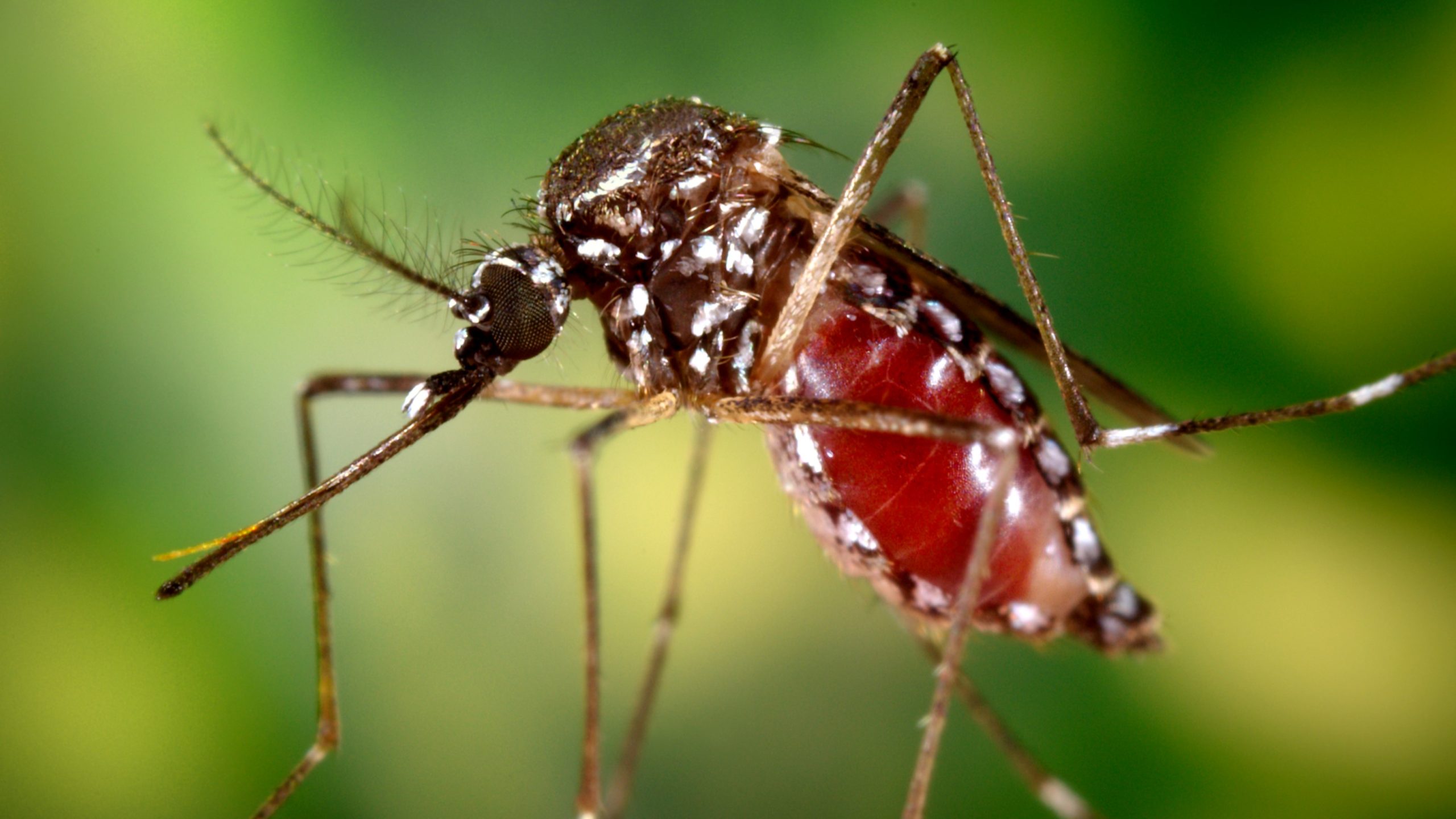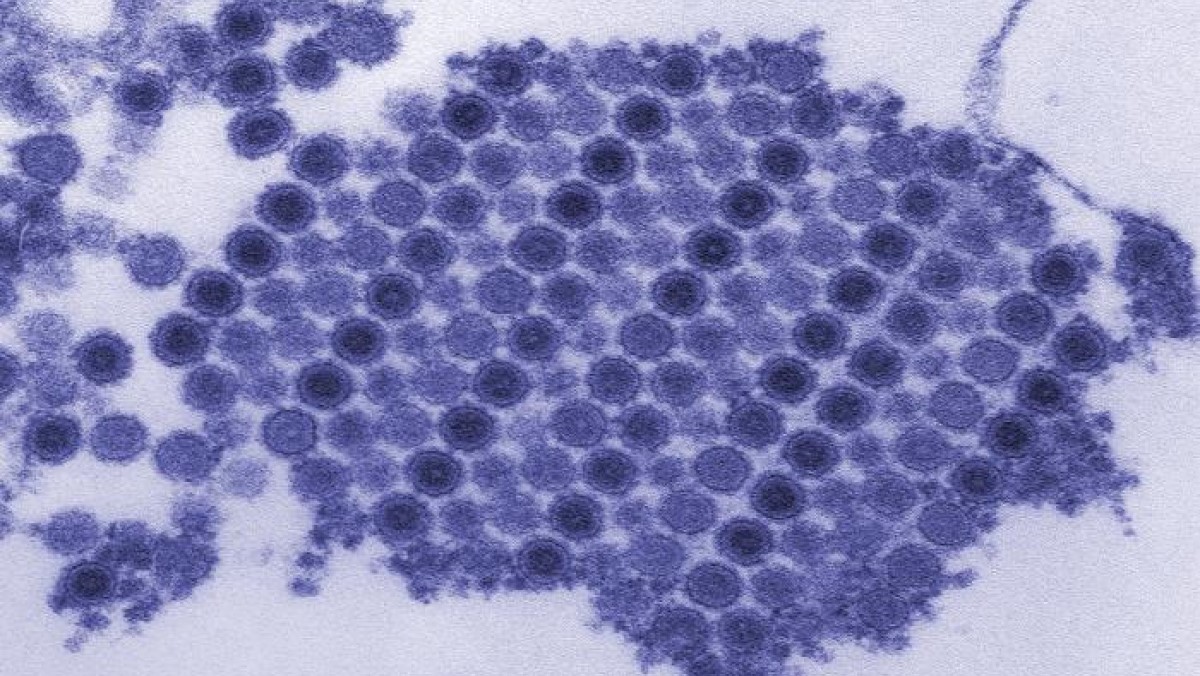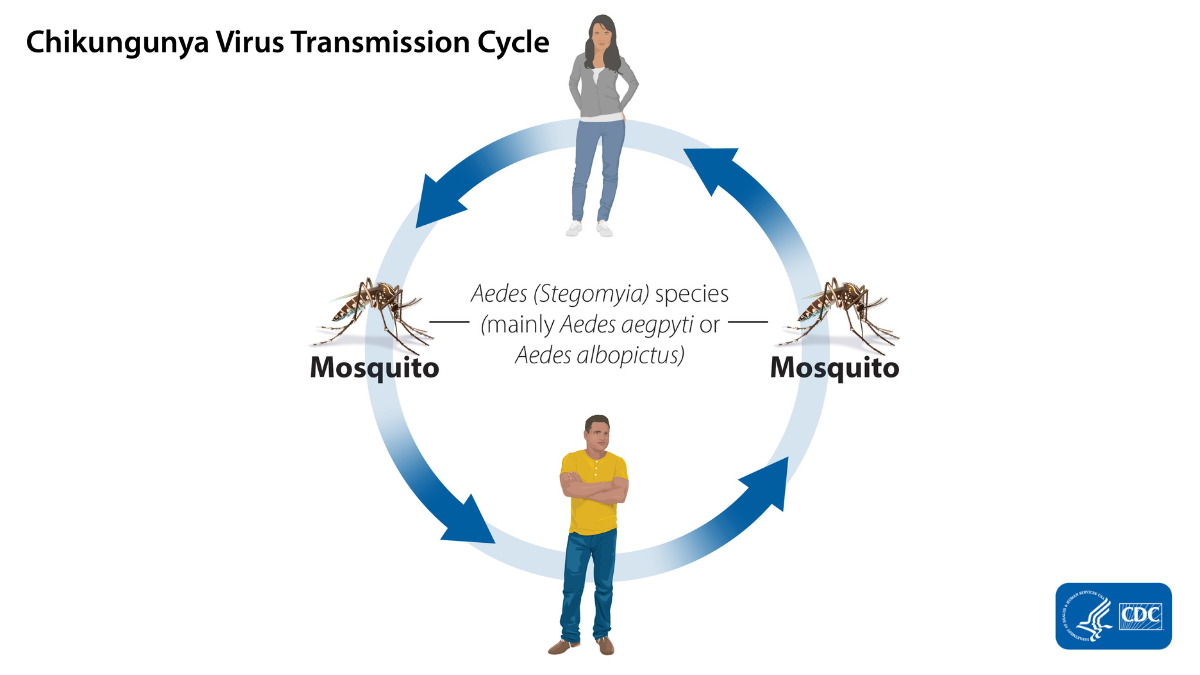Key points
- Chikungunya virus is an alphavirus, similar to Mayaro and Ross River viruses.
- Chikungunya virus is primarily transmitted to people through the bite of an infected mosquito, mainly Aedes aegypti and Ae. albopictus.
- Humans are the primary hosts of chikungunya virus during epidemic periods.
- Bloodborne, intrapartum, and in utero transmission of chikungunya virus can occur.

Virus
- Chikungunya virus belongs to the family Togaviridae, genus Alphavirus.
- Alphavirus infections can either cause arthralgic or neuroinvasive disease.
- Other medically important alphaviruses found in the Americas include eastern equine encephalitis virus (neuroinvasive), Mayaro virus (arthralgic), and western equine encephalitis virus (neuroinvasive).

- The virus particles are enveloped icosahedral capsids and have a diameter of 60–70 nm.
Transmission
Chikungunya virus is primarily transmitted to people through the bite of an infected mosquito, mainly Aedes aegypti and Ae. albopictus. People are the primary hosts of chikungunya virus during epidemic periods. Mosquitoes become infected when they feed on a person who already has the virus.

Bloodborne transmission of chikungunya virus is possible; cases have been documented among laboratory personnel handling infected blood and a healthcare provider drawing blood from an infected patient.
Rare in utero transmission has been documented, mostly during the second trimester. Intrapartum transmission has also been documented when the mother was viremic around the time of delivery. Chikungunya virus has not been found in breast milk, and there have been no reports to date of infants acquiring chikungunya virus infection through breastfeeding. Because the benefits of breastfeeding likely outweigh the risk of chikungunya virus infection in breastfeeding infants, mothers should be encouraged to breastfeed even if they are infected with chikungunya virus or live in an area with ongoing virus transmission.
The risk of a person transmitting chikungunya virus to a biting mosquito or through blood is highest when the patient is viremic during the first week of illness.
